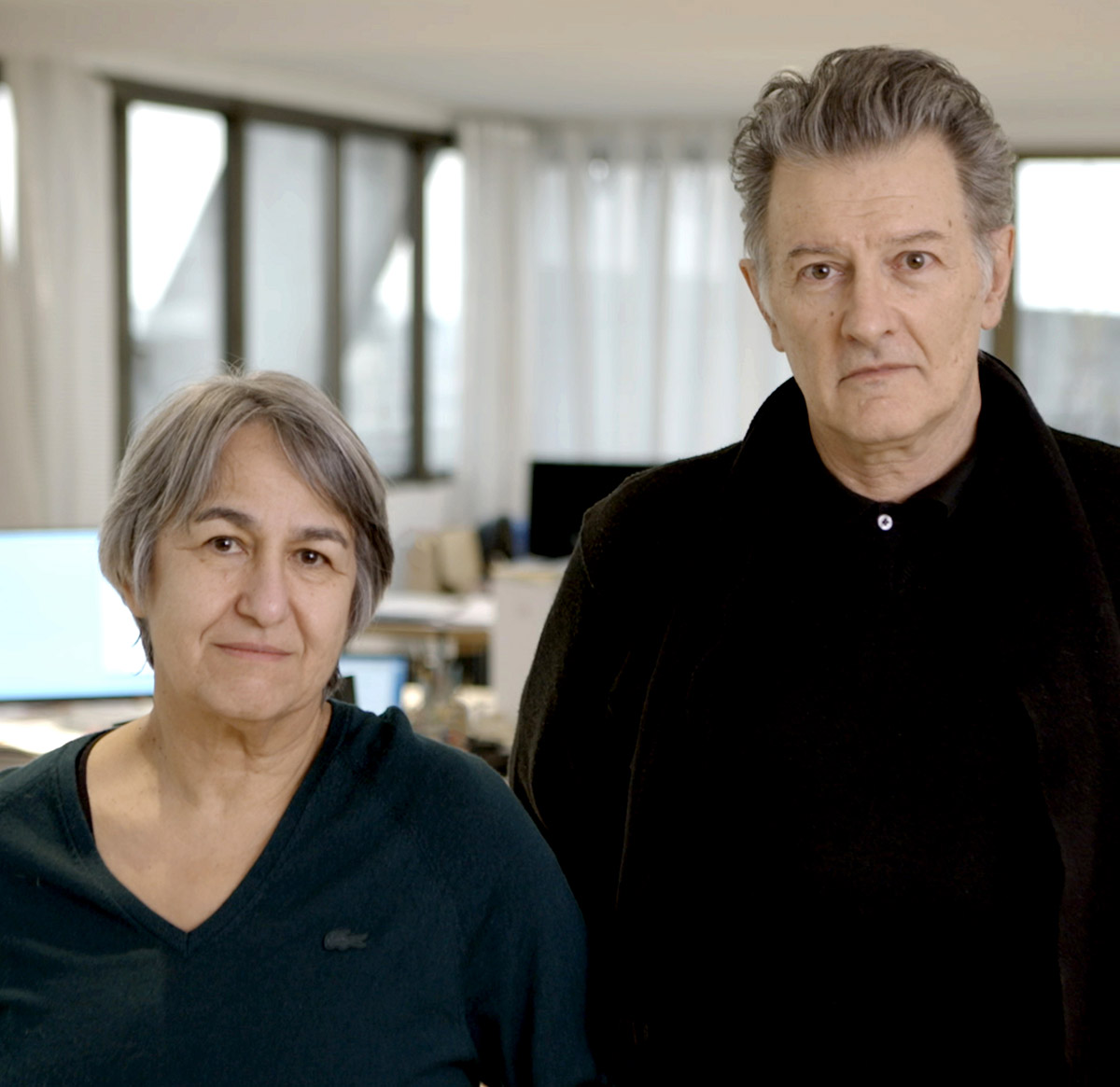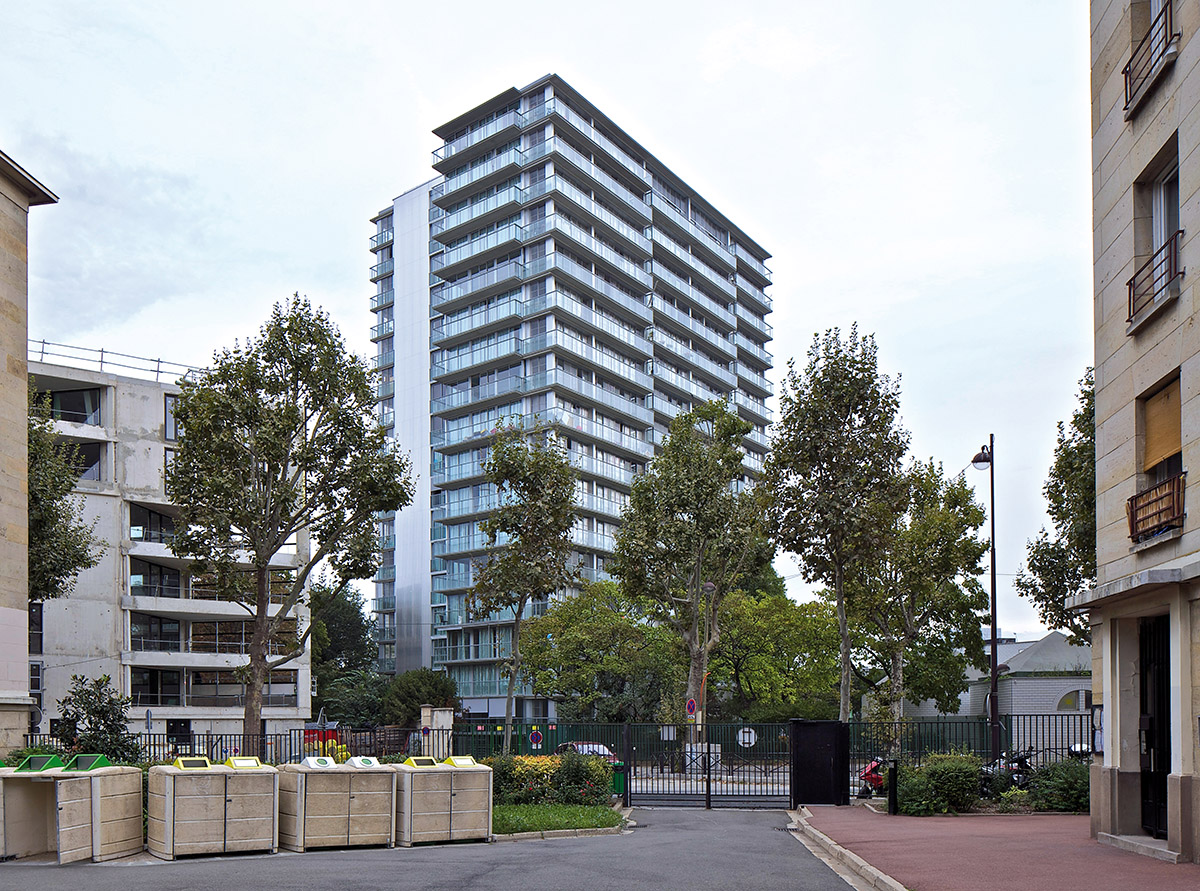Submitted by WA Contents
Anne Lacaton and Jean-Philippe Vassal win the 2021 Pritzker Architecture Prize
France Architecture News - Mar 16, 2021 - 17:05 8403 views

Anne Lacaton and Jean-Philippe Vassal, founders of French architecture studio Lacaton & Vassal Architectes, have been named as the recipients of the 2021 Pritzker Architecture Prize.
The names of Anne Lacaton and Jean-Philippe Vassal have been announced by Tom Pritzker, Chairman of The Hyatt Foundation, which sponsors the award that is known internationally as architecture’s highest honor.
"Anne Lacaton and Jean-Philippe Vassal proposed an adjusted definition of the very profession of architecture"
"Not only have they defined an architectural approach that renews the legacy of modernism, but they have also proposed an adjusted definition of the very profession of architecture," stated in the 2021 Pritzker Prize Jury Citation.
"The modernist hopes and dreams to improve the lives of many are reinvigorated through their work that responds to the climatic and ecological emergencies of our time, as well as social urgencies, particularly in the realm of urban housing."
"They accomplish this through a powerful sense of space and materials that creates architecture as strong in its forms as in its convictions, as transparent in its aesthetic as in its ethics," added the 2021 Pritzker Prize Jury Citation.
"Good architecture is open—open to life, open to enhance the freedom of anyone"
"Good architecture is open—open to life, open to enhance the freedom of anyone, where anyone can do what they need to do," said Lacaton.
"It should not be demonstrative or imposing, but it must be something familiar, useful and beautiful, with the ability to quietly support the life that will take place within it."
As the statement explains, the architects increase living space exponentially and inexpensively, through winter gardens and balconies that enable inhabitants to conserve energy and access nature during all seasons.

Latapie House. Image © Philippe Ruault
Latapie House (Floirac, France 1993) was their initial application of greenhouse technologies to install a winter garden that allowed a larger residence for a modest budget.
The east-facing retractable and transparent polycarbonate panels on the back side of the home allow natural light to illuminate the entire dwelling, enlarging its indoor communal spaces from the living room to the kitchen, and enabling ease of climate control.
Alejandro Aravena, Chair of the Pritzker Architecture Prize Jury, said that "this year, more than ever, we have felt that we are part of humankind as a whole. Be it for health, political or social reasons, there is a need to build a sense of collectiveness. Like in any interconnected system, being fair to the environment, being fair to humanity, is being fair to the next generation."
"Lacaton and Vassal are radical in their delicacy and bold through their subtleness, balancing a respectful yet straightforward approach to the built environment," Aravena added.

Transformation of 100 Units, Tour Bois le Prêtre, Social Housing (with Frédéric Druot). Image © Philippe Ruault
On a grander scale, Lacaton and Vassal, alongside Frédéric Druot, transformed La Tour Bois le Prêtre in Paris, France in 2011, a 17-story, 96-unit city housing project originally built in the early 1960s.
The architects increased the interior square footage of every unit through the removal of the original concrete façade, and extended the footprint of the building to form bioclimatic balconies.
"Our work is about solving constraints and problems, and finding spaces that can create uses, emotions and feelings. At the end of this process and all of this effort, there must be lightness and simplicity, when all that has been before was so complex," explained Vassal.
Lacaton insisted that "transformation is the opportunity of doing more and better with what is already existing. The demolishing is a decision of easiness and short term. It is a waste of many things—a waste of energy, a waste of material, and a waste of history. Moreover, it has a very negative social impact. For us, it is an act of violence."
"Anne Lacaton and Jean-Philippe Vassal have always understood that architecture lends its capacity to build a community for all of society," remarked Pritzker.
"Their aim to serve human life through their work, demonstration of strength in modesty, and cultivation of a dialogue between old and new, broadens the field of architecture."
Significant works also include Cap Ferret House (Cap Ferret, France 1998), 14 social houses for Cité Manifeste (Mulhouse, France 2005); Pôle Universitaire de Sciences de Gestion (Bordeaux, France 2008); low-rise apartments for 53 units (Saint-Nazaire, France 2011), a multipurpose theater (Lille, 2013), Ourcq-Jaurès student and social housing (Paris, France 2013); a 59-unit social housing development at Jardins Neppert (Mulhouse, France 2014–2015); and a residential and office building in Chêne-Bourg (Geneva, Switzerland 2020).
Anne Lacaton, 66, was born in Saint-Pardoux, France and Jean-Philippe Vassal, 67 was born in Casablanca, Morocco. They met in the late 1970s during their formal architecture training at École Nationale Supérieure d’Architecture et de Paysage de Bordeaux.
Lacaton went on to pursue a Masters in Urban Planning from Bordeaux Montaigne University (1984), while Vassal relocated to Niger, West Africa to practice urban planning. Lacaton often visited Vassal, and it was there that the genesis of their architectural doctrine began, as they were profoundly influenced by the beauty and humility of sparing resources within the country’s desert landscapes.
Lacaton & Vassal was established by Anne Lacaton and Philippe Vassal in Paris in 1987, and they have completed over 30 projects throughout Europe and West Africa.
They have since demonstrated boldness through their design of new buildings and transformative projects. For over three decades, they have designed private and social housing, cultural and academic institutions, public space, and urban strategies.
The duo’s architecture reflects their advocacy of social justice and sustainability, by prioritizing a generosity of space and freedom of use through economical and ecological materials.
Lacaton and Vassal are the 49th and 50th Laureates of the Pritzker Architecture Prize.
In 2020, distinguished Irish duo Yvonne Farrell and Shelley McNamara were named as the 2020 Laureate of the Pritzker Architecture Prize.
Video © The Hyatt Foundation/The Pritzker Architecture Prize
Read the full Jury Citation below:
The work of Anne Lacaton and Jean-Philippe Vassal reflects architecture’s democratic spirit.Through their ideas, approach to the profession, and the resulting buildings, they have proven that a commitment to a restorative architecture that is at once technological, innovative, and ecologically responsive can be pursued without nostalgia. This is the mantra of the team of Anne Lacaton and Jean-Philippe Vassal since founding their Paris-based firm in 1987. Not only have they defined an architectural approach that renews the legacy of modernism, but they have also proposed an adjusted definition of the very profession of architecture. The modernist hopes and dreams to improve the lives of many are reinvigorated through their work that responds to the climatic and ecological emergencies of our time, as well as social urgencies, particularly in the realm of urban housing. They accomplish this through a powerful sense of space and materials that creates architecture as strong in its forms as in its convictions, as transparent in its aesthetic as in its ethics.At once beautiful and pragmatic, they refuse any opposition between architectural quality, environmental responsibility, and the quest for an ethical society.
For more than 30 years, their critical approach to architecture has embodied generosity of space, ideas, uses and economy of means, materials, and also of shape and form. This approach has resulted in innovative projects for residential, cultural, educational, and commercial buildings. Since their early projects, including Latapie House, the private house in Bordeaux, and civic works such as the proposal for the Human Science Center in Saint-Denis or the School of Architecture in Nantes, they have shown sensitivity and warmth of experience to their buildings’ users. The architects have expressed that buildings are beautiful when people feel well in them, when the light inside is beautiful and the air is pleasant, and when there is an easy flow between the interior and exterior.
The notion of belonging and being accountable to a larger whole involves not only fellow humans but the planet in general. From very early on, Anne Lacaton and Jean-Philippe Vassal have consistently expanded the notion of sustainability to be understood as a real balance between its economic, environmental and social pillars. Their work has delivered through a variety of projects that actively address responsibility in these three dimensions.
The practice begins every project with a process of discovery which includes intensely observing and finding value in what already exists. In the case of the 1996 commission, Léon Aucoc Plaza, their approach was simply to undertake the minimal work of replacing the gravel, treating the lime trees, and slightly modifying the traffic, all to grant renewed potential to what already existed.
In their housing projects for the transformation of the Paris block, Tour Bois le Prêtre, and three blocks in the Grand Parc neighborhood in Bordeaux (both realized with Frédéric Druot), instead of demolition and reconstruction they carefully added space to the existing buildings in the form of generous extensions, winter gardens and balconies that allow for freedom of use and therefore are supportive of the real lives of the residents. There is a humility in the approach that respects the aims of the original designers and the aspirations of the current occupants.
For the cultural center, FRAC Nord-Pas de Calais in Dunkirk, they chose to keep the original hall and attach a second one of similar dimensions to the existing building. Absent is nostalgia for the past.Rather, they seek transparency, openness, and luminosity with a respect for the inherited and a quest to act responsibly in the present. Today, a building that previously went unnoticed becomes an iconic element in a renewed cultural and natural landscape.
Through their belief that architecture is more than just buildings, through the issues they address and the proposals they realize, through forging a responsible and sometimes solitary path illustrating that the best architecture can be humble and is always thoughtful, respectful, and responsible, they have shown that architecture can have a great impact on our communities and contribute to the awareness that we are not alone. For their body of work realized and that of the future, Anne Lacaton and JeanPhilippe Vassal are named the 2021 Pritzker Prize Laureates.
Top image: Anne Lacaton and Philippe Vassal. Image © Laurent Chalet.